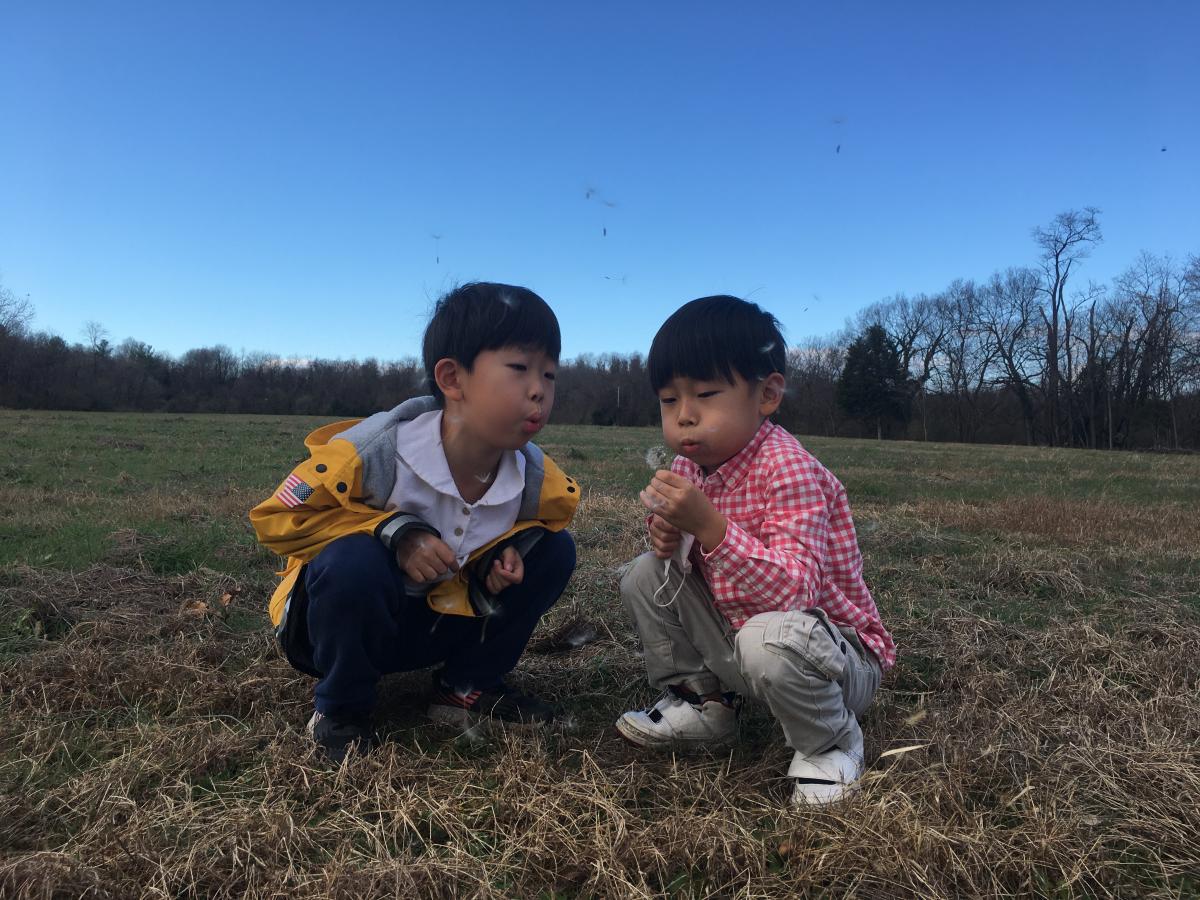Breadcrumb
- Adventure Stories
- Loving Outside - The benefits of getting out in nature
Loving Outside - The benefits of getting out in nature
In a study by the Outdoor Foundation, researchers found, as a whole, kids went on 15 percent fewer outings between 2012 and 2018. And of the people that do go outside to recreate, 63% only ventured within 10 miles of their home.
“We're becoming an indoor nation,” says Lise Aangeenbrug, the executive director of the Outdoor Foundation. “People are missing out on the joy, learning, and community building that the outdoors can provide. Whether you bike, hike, ski, hunt, run, or fish, it's a lost opportunity.” She then goes on to say, “the evidence is building that outdoor time can help address physical health issues, mental health issues, social and emotional learning, academic outcomes, and community connection.,”
Below are ways that going outdoors, engaging with nature, and becoming a steward of parks can help boost a child's overall wellness.
Physical
Physical wellness is the most traditional measure of health. It involves eating well, exercising regularly, practicing good hygiene, and getting enough sleep. Attention to physical wellness can help give you energy, enhance self-esteem, and affect your overall livelihood. It perhaps goes without saying how going outdoors can impact physical wellness. Walking, hiking, playing sports, and riding bikes are just some of the many ways you can utilize outdoor spaces to better your physical health.
Emotional
Emotional wellness is the ability to understand and cope with emotions. It is also the ability to understand limitations while being confident in one's own unique abilities. Not every kid can be a runner, but maybe they become good at spotting birds or planting a garden. Managing emotions also require learning stress management, which going outdoors can significantly impact. Studies show that being in nature lowers your stress-hormone cortisol and decreases your heart rate. A simple walk in nature can even ease symptoms of anxiety and depression.
Social
Social wellness involves developing a healthy support network and interpersonal skills. Family time and community activities can boost social skills in children. Walking, playing, or visiting a park as a family or group is a great way to utilize outdoor spaces. Parents should also look into playgroups and creating a network of trusted neighbors. This can help assuage environmental fears that hinder independent mobility, which plays a lasting role in developing early social skills.
Intellectual
Do your kids like to learn for the sake of learning? Intellectual wellness is defined by a healthy curiosity about the world around you. Where you ask questions and form your own opinions about current situations. Getting outside and exploring nature is a great way to get kids to pursue new interests while challenging thinking and boosting problem-solving skills. Allowing children to get dirty and observe nature inspires curiosity and creativity. While playing sports encourages teamwork, problem-solving, and respect towards other viewpoints.
Environmental
Good environmental wellness fosters a healthy relationship with the earth. Understanding conservation, spending time in parks, walking or biking as alternate transportation, and recycling are habits kids can employ now. The more children engage with nature, the more they will grow to appreciate it and, in turn, seek to protect it.
Spiritual
Spiritual wellness is the most personal and uniquely defined per individual. It allows us to open ourselves to experiences, whether with ourselves or others. Volunteerism, sharing joy, showing compassion, and discovering meaning and direction are all aspects of boosting spiritual wellness. Whatever your definition of spiritual wellness, engaging with nature is a little-demanding way to connect with life. Whether you help in a park clean-up or bring your friends to your favorite trail, you can become a steward to nature as part of your spiritual journey.

Disengagement with the outdoors and nature is nothing new. In 1984, biologist E. O. Wilson proposed the theory of “biophilia,” which states humans are instinctively drawn to natural surroundings. Yet, the next generation of parents would question this so-called “biophilia” as they watched their kids prefer to sit in front of screens instead of playing outside. Spending more time indoors has become a rising norm among children. Author Richard Louv even coined the phenomenon “nature-deficit disorder" in his book Last Child in the Woods: Saving Our Children From Nature-Deficit Disorder.
Alongside spending less time outside, wellness in children has also deteriorated. Not only are pediatricians observing more mental illness and behavioral disorders in children, but 1 in 5 children will also experience obesity (2017-2018 CDC Report). More recently, due to school closures and decreased activity, the rate of childhood obesity doubled during the COVID-19 pandemic (CDC August 2021 report). As you can expect, the rate of mental illness also increased. These dilemmas highlight the need for better at-home healthy habits and mental health awareness for children.
While it can be argued these issues may not directly correlate with nature-deficit disorder, the fact remains that getting kids outdoors can reverse these trends. However, many hurdles to getting kids outside often start in the home (Paving the Way for Outdoor Play: Examining Socio-Environmental Barriers to Community-Based Outdoor Play). Children spending time playing outdoors at home and around their communities depends on their level of independent mobility. Independent mobility is the freedom granted to children from guardians to move around neighborhoods and cities without adult supervision. One contribution to limited independent mobility was safety concerns, usually directed towards the neighborhood environment or general risk in recreational activities. Another hurdle is children are “too busy” to go outside due to screen-based activities or assignments. Children were also occupied with non-recreational extracurricular activities in school or other organizations. Low accessibility to play spaces also contributes to a lack of outdoor time, and lower-income families especially had less access to community-based outdoor play.
To sum it up, getting outdoors is simply good for everyone. It helps combat stress, build community, and keep your mind and body healthy. But it takes encouragement from inside homes, schools, and the community to get people outside. Organizations across the globe are actively focusing on ways to get children outdoors and make the experience more accessible. Programs like Kids in Parks, where we provide a cost-effective intervention to address these issues. Our initiatives encourage and support active family engagement, increase trail use, and introduce recreational opportunities available in parks, forests, and communities. Yet, even simple outdoor experiences, led by parents and guardians, can have lasting impacts on children, boosting all dimensions of wellness. And over time, experiences in the outdoors can become second nature to both children and families.
